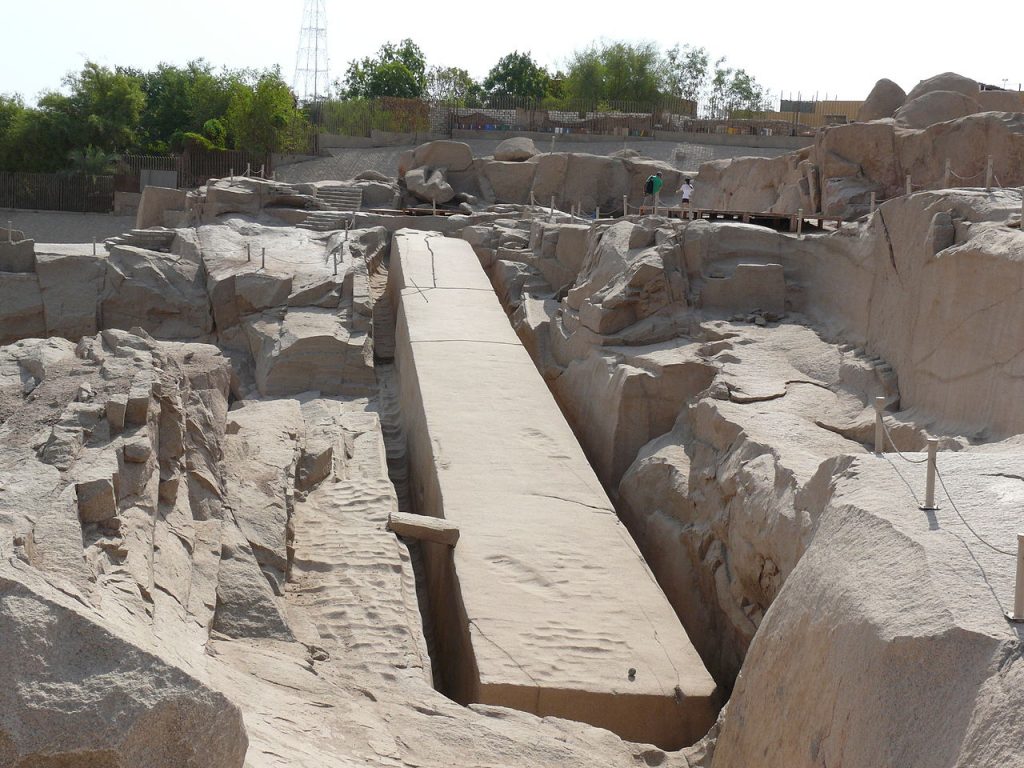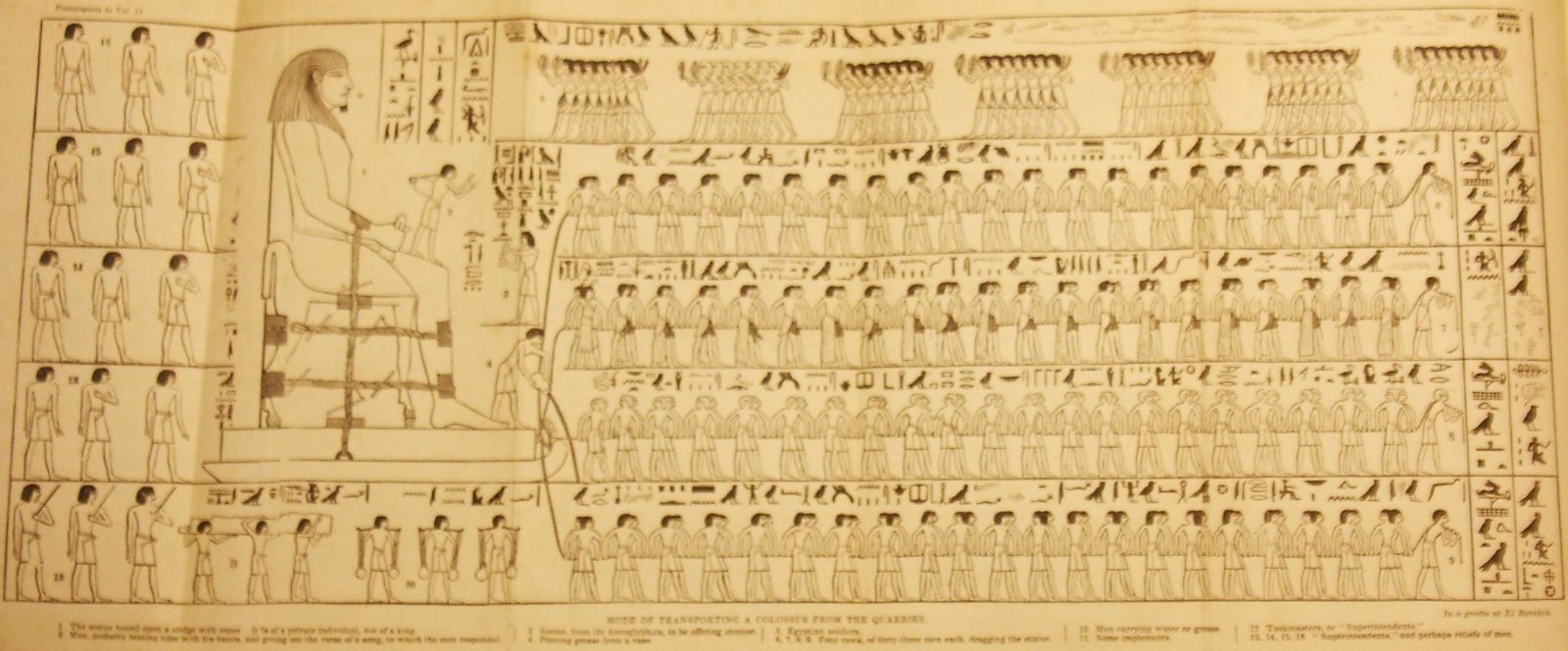
A recent video posting by Brien Foerster on his YouTube channel prompted me to post a reply on behalf of a friend, that included information on the many methods of stoneworking that Ancient Egyptians employed. This wasn’t really a comment to rebut Foerster directly–I think he’s well aware of the science behind it all. It just doesn’t sell. And mysteries make him money in tours and book sales. The comment wasn’t even for the die-hard ancient-civ crowd that is sure some sort of “high technology” existed long before the Egyptians (even though there’s no trace of them in the archaeological record). The comment was for the casual reader searching for information on ancient cultures in Egypt and elsewhere that really doesn’t know much about the topic. Included were several links to legitimate sources and videos.

Foerster’s only comment was a cryptic, “they did not make the megaliths.” I really don’t know what he meant by “they” (Egyptians?) and he didn’t care to elucidate. But another commenter derided the magnificent and wondrous craftsmanship of Dynastic Egyptian stoneworkers by accusing them of simply “bashing rocks together.” She also tried to appeal to numerology by implying that since the builders of the Great Pyramid were able to place the pyramid on a latitude that is the same as the speed of light in a vacuum, they must therefore….? She doesn’t say anything more. Just the implication that a primitive civilization couldn’t possibly have built that pyramid. Few if any genuine archaeologists and Egyptologists would characterize Dynastic Egyptians as “primitive” (and to be fair, the commenter did not use that word, specifically–it was all implied).
The speed of light in a vacuum is 299,792,458 meters per second (m/s). The decimal coordinate for the Great Pyramid is Lat 29.979; Long 31.134.
First “bashing rocks together” is a gross oversimplification. They often used harder materials to grind, scrape, and ultimately cut less harder materials. Chert, for example, has a higher hardness than, say, granite or basalt. They also used fire to heat the mediums they wished to cut

or split. A good text to read on the topic is Denys Stocks’ “Experiments in Egyptian Archaeology: Stoneworking Technology in Ancient Egypt.”
Second, we know the few digits in the speed of light that correspond to the digital lat/lon of the Great Pyramid is coincidental for a variety of reasons:
1) the speed of light value in question is in meters per second, both units not invented in the period of construction for the pyramid. So the corresponding value would be meaningless at that time.
The meter was originally 1 / 10,000,000th the distance from the North Pole to the Equator as it passes through the Paris meridian. It was defined in the 18th century–well after the construction of the Giza pyramids.
As a unit of measure, the second didn’t appear until around 1000 CE at the earliest and not until the 17th century for practical use.
2) only the latitude is used, and even this figure has a leeway of +/-230 meters. All the digits after the 4th decimal place are fuzzy when it comes to the pyramid. One might be tempted to argue that the latitude that corresponds to the digits of the speed of light represents the precise center of the pyramid. Others might argue differently. There is at least one source at GeoHack (https://goo.gl/N6XMPm) that says the decimal latitude of the precise center is 29.979175 which is decidedly *not* the value of 29.9792458.
3) Had the latitude or the longitude (or a combination of the two) equaled some variation of 655714037.62, this would have been interesting but still a coincidence. But it would have been a coincidence you might have an easier time convincing others of its significance since that would be the number of cubits / sec light travels in a vacuum.
What the ancient Egyptians did with stone work was a marvelous testament to human ingenuity and spirit. It’s a shame that there are those who would seek to disparage that by creating scenarios where it is thought to be impossible for them to have done what they so clearly did. Regardless of how many experimental studies are conducted and archaeological finds show contexts that corroborate their ingenuity, skill, and patience, someone comes along and invents a fanciful reason why it can’t be so–seemingly as a means to sell books, goods, and tours to unsuspecting lay-persons interested in ancient civilizations and heritage.
My question, was how improbable this GP’s light speed correlation is. The answer, unless you can show me otherwise, currently appears to be about a once-in-8,000 kind of ‘random’ outcome, or twice as unlikely as Poker’s Four of a Kind. Details here. Please let me know if you spot any major errors! https://www.reddit.com/r/AnomaliesUnleashed/comments/ak3lpc/what_are_the_odds_great_pyramid_lightspeed/
How improbable? I think you’re asking the wrong question. The correct question is how probable is it that 29.9792458 latitude intersects a given point on the Earth’s surface. The radius of the Earth at that latitude at roughly ground level is about 6372.831 km, making the circumference 40041.7 km.
The Great Pyramid is a terrestrial point on the Earth’s surface that happens to be man-made. So, what is your question? Is it what is the probability that this latitude would intersect a terrestrial point? A man-made terrestrial point? A man-made terrestrial point built at least 4500 years ago?
While there is a coincidental correlation between a numeric representation of the speed of light and approximately 11 mm wide line of latitude that passes through one of the thousands of square millimeters of a single man made structure (that same latitude undoubtedly intersects thousands of other man made objects and structures a various periods of history and prehistory), it is only a correlation. Completely coincident.
The probability that this 11 mm wide line of latitude passes through the Great Pyramid is exactly the same for the thousands upon thousands of other man made structures and objects it passes through. The significance of this one structure is more your own than mine. The people of Kingsley Lake in Florida (http://www.kingsleylake.org/facts/history.html) might think their little lake with a near perfect circle is more significant that some silly pyramid on the other side of the world. It’s also at the same latitude.
Correlations and coincidences happen.
What is your explanation for the pyramid being in the geographic center of Earth? It the fact that it’s measurements contain formulas for the Earth’s distance from the Sun and Moon? How did dynastic Egyptians know these measurements? Lots of people have their theories, but none have proof. Why don’t the Egyptians have record of them building the pyramid? Lots of speculation and conjecturing b/c nobody wants to say we have no idea, yourself included.
A “geographic center” of the Earth? I’m assuming you mean land masses only? But then aren’t the placement and designations of oceans the purview of geography as well? Astronomer Charles Smyth, in the 1860s, arbitrarily chose the Pyramid of Giza as the so-called “geographic center” but I don’t know that he showed his math. Only that it seemed to be close enough to the combined center of the Earth’s land masses. It turned out this wasn’t true and that the actual “geographic center of the Earth” -as calculated by modern computers- is in the north end of the province of Çorum in Turkey.
I’ve never heard that. What’s are the formulas and measurements. Please use units of measure available to ancient Egyptians, otherwise it will be meaningless.
What makes you think they didn’t?


Even if there were zero extan records of Egyptians building pyramids, why would it mean they did not? Who else would have built them? Elves? The materials at the some 80 or more pyramids in Egypt that have variously been dated, place them at the times of various rulers. And there are likely many records or documents that have either not yet been found or will not because they didn’t survive the ravages of time.
What, precisely have I speculated on that you have a better answer for? In fact, what have I speculated on at all?